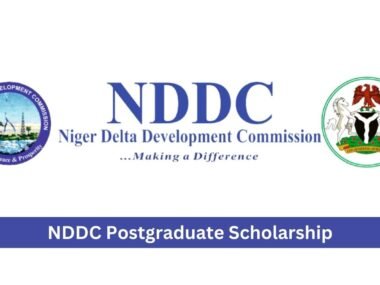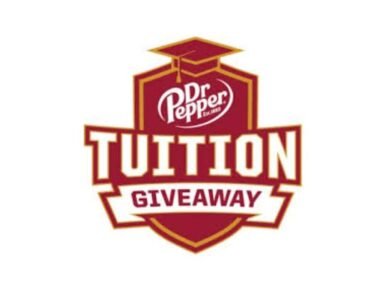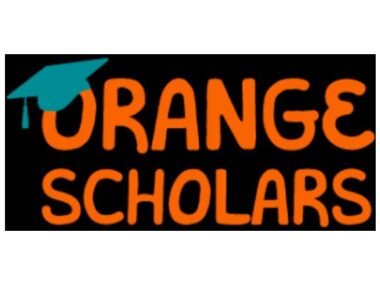Including scholarships on a resume can be a strategic decision for job seekers, particularly students and recent graduates aiming to stand out in competitive job markets. Scholarships reflect academic excellence, dedication, and often leadership or community involvement, qualities that employers value. However, the decision to include them depends on various factors, such as the type of scholarship, the job you’re applying for, and your level of professional experience.
This article explores the nuances of whether should you put scholarships on resume, offering insights into when and how to list them, their impact on hiring decisions, and best practices for optimizing your resume.
Understanding the Role of Scholarships on a Resume
A resume is a professional document that showcases your skills, experiences, and achievements to potential employers. Scholarships, as markers of academic or extracurricular success, can enhance your resume by demonstrating your ability to excel in competitive environments. The question should you put scholarships on resume arises because not all scholarships carry the same weight, and their relevance can vary depending on the context of your application.
Scholarships come in various forms: merit-based (awarded for academic or leadership achievements), need-based (granted to students with financial need), athletic (for sports achievements), or field-specific (tied to a particular major or industry, such as STEM or aviation). According to a 2023 survey by the National Association of Colleges and Employers (NACE), 68% of employers value academic achievements, including scholarships, when evaluating entry-level candidates. However, the same survey noted that employers prioritize work experience and skills over academic awards for candidates with more than two years of professional experience. This highlights the importance of tailoring your resume to your career stage and the job’s requirements when deciding should you put scholarships on resume.
When Should You Put Scholarships On Resume?
1. Recent Graduates or Students
For students or recent graduates with limited work experience, scholarships can be a powerful addition to a resume. They fill gaps in professional experience and signal to employers that you’ve been recognized for your hard work. For example, a merit-based scholarship like the National Merit Scholarship or a prestigious award like the Rhodes Scholarship can set you apart from other candidates. In a 2024 LinkedIn poll, 72% of hiring managers agreed that scholarships on a resume indicate a candidate’s dedication and ability to meet high standards, especially for entry-level roles.
If you’re a student or recent graduate, consider including scholarships if:
-
The scholarship is well-known or prestigious (e.g., Fulbright, Gates Millennium, or Horatio Alger).
-
It’s relevant to the job or industry (e.g., an engineering scholarship for a tech role).
-
You have limited work or internship experience to highlight.
-
The scholarship reflects skills like leadership, teamwork, or community service.
2. Industry Relevance
When deciding should you put scholarships on resume, consider whether the scholarship aligns with the job’s industry or requirements. For instance, if you’re applying for a role in aerospace engineering and received a scholarship from Embry-Riddle Aeronautical University for academic excellence in aeronautics, listing it can demonstrate both your expertise and commitment to the field. A 2022 study by CareerBuilder found that 61% of employers in technical fields value industry-specific awards, including scholarships, when assessing candidates.
3. Limited Professional Experience
For candidates transitioning careers or entering the workforce with minimal experience, scholarships can serve as a proxy for achievements. They show that you’ve been recognized for your potential, which can be particularly compelling for roles that value academic rigor or intellectual curiosity. For example, a need-based scholarship requiring a strong essay or community service component can highlight your communication skills or civic engagement.
4. When Space Allows
Resumes should be concise, typically one page for recent graduates and two pages for experienced professionals. If your resume has ample space, including scholarships can enhance your profile without overcrowding it. However, if you have extensive work experience, internships, or certifications, you may need to prioritize those over scholarships to avoid clutter.
When Not to Include Scholarships
There are scenarios where you might reconsider including scholarships:
-
Irrelevant or Minor Awards: Small or less competitive scholarships (e.g., a $ Old $100 award from a local club) may not carry enough weight to justify resume space.
-
Mid-to-Late Career Professionals: If you have significant work experience (e.g., 5+ years), scholarships may seem outdated compared to recent accomplishments.
-
Space Constraints: If your resume is already packed with more relevant experiences, scholarships may be less impactful.
-
Confidentiality Concerns: Some scholarships, especially need-based ones, may involve personal financial details you’d prefer not to disclose.
A 2023 ResumeLab survey found that 54% of candidates with over five years of experience omitted scholarships from their resumes, citing irrelevance to their current career stage. This underscores the need to evaluate the scholarship’s significance and alignment with your professional narrative.
How to List Scholarships on Your Resume
If you decide that should you put scholarships on resume is appropriate for your situation, the next step is presenting them effectively. Here are the best practices for listing scholarships:
1. Choose the Right Section
Scholarships can be included in various resume sections, depending on their nature and your career stage:
-
Education Section: Most common for students and recent graduates. List scholarships under the institution where they were awarded.
-
Example:
University of XYZ, Bachelor of Science in Computer Science
Dean’s List Scholarship, 2022–2024 (Merit-based award for top 5% of class)
-
-
Awards and Honors Section: Ideal for prestigious or competitive scholarships, especially if you have multiple awards to highlight.
-
Example:
Awards and Honors
National Merit Scholarship, 2023 (Full-tuition award for academic excellence)
-
-
Achievements Section: Suitable for scholarships tied to specific accomplishments, like leadership or research.
-
Example:
Achievements
Boeing Engineering Scholarship, 2024 (Awarded for outstanding contributions to aerospace research)
-
2. Provide Context
Briefly describe the scholarship to convey its significance. Include the award name, year, and a short explanation of its criteria (e.g., “Merit-based award for academic excellence” or “Competitive scholarship for leadership in STEM”). This helps employers understand the scholarship’s prestige and relevance. For example:
-
Horatio Alger Scholarship, 2023 (National award for overcoming adversity and academic achievement)
3. Quantify Impact
If possible, quantify the scholarship’s value or competitiveness. For instance:
-
Gates Millennium Scholarship, 2022 (Full-tuition award for top 1% of applicants nationwide) This adds credibility and context, making the scholarship more impressive.
4. Keep It Concise
Avoid lengthy descriptions. A single line per scholarship is usually sufficient unless it’s a highly prestigious award requiring more detail. For example:
-
Fulbright Scholarship, 2024 (Funded international research in sustainable aviation)
5. Tailor to the Job
Customize how you present scholarships based on the job description. Highlight scholarships that align with the employer’s values or the role’s requirements. For instance, a scholarship for community service is ideal for nonprofit roles, while a STEM scholarship suits tech or engineering positions.
Benefits of Including Scholarships on Your Resume
Including scholarships can offer several advantages when answering should you put scholarships on resume:
-
Demonstrates Excellence: Scholarships signal that you’ve been recognized by academic institutions or organizations for your achievements.
-
Fills Experience Gaps: For those with limited work history, scholarships provide tangible accomplishments.
-
Highlights Soft Skills: Many scholarships require leadership, teamwork, or community involvement, which are transferable skills employers seek.
-
Boosts Credibility: Prestigious scholarships, like the Rhodes or Truman, carry national or international recognition, enhancing your resume’s impact.
A 2024 Indeed report noted that 63% of entry-level job postings prioritize candidates with demonstrated achievements, including scholarships, making them a valuable asset for recent graduates.
Potential Drawbacks and How to Mitigate Them
While scholarships can strengthen a resume, there are potential drawbacks to consider:
-
Perceived Irrelevance: Older or minor scholarships may seem out of place for experienced professionals. Mitigate this by only including scholarships that are recent, prestigious, or industry-relevant.
-
Space Limitations: A cluttered resume can dilute your message. Prioritize scholarships that add the most value and omit those that are less impactful.
-
Privacy Concerns: Need-based scholarships may reveal financial details. Focus on the achievement aspect (e.g., “Awarded for academic merit and financial need”) rather than personal circumstances.
Recent Trends in Resume Building (2020–2025)
The job market has evolved significantly in recent years, influencing how candidates approach the question should you put scholarships on resume. Key trends include:
-
Emphasis on Skills-Based Hiring: A 2025 SHRM report found that 71% of employers prioritize skills over traditional credentials, but academic achievements like scholarships remain relevant for entry-level roles.
-
Digital Resumes and ATS: Applicant Tracking Systems (ATS) scan resumes for keywords. Including scholarships with specific terms (e.g., “STEM scholarship” or “leadership award”) can improve ATS compatibility.
-
Holistic Candidate Evaluation: Employers increasingly value well-rounded candidates. Scholarships that reflect community service, leadership, or diversity initiatives align with this trend.
-
Test-Optional Trends: With many universities, including Embry-Riddle, adopting test-optional admissions (as noted in 2023 policies), scholarships tied to grades or essays are gaining prominence as indicators of academic strength.
Examples of Scholarship Entries on Resumes
Below are sample resume entries for different scenarios, illustrating how to address should you put scholarships on resume:
Example 1: Recent Graduate Applying for an Engineering Role
Education
University of XYZ, B.S. in Aerospace Engineering, May 2025
-
Boeing Engineering Scholarship, 2023–2025 (Merit-based award for top 10% of engineering students)
-
Dean’s List, 2022–2025 (Recognized for 3.8+ GPA each semester)
Example 2: Mid-Career Professional in a Leadership Role
Awards and Honors
-
Truman Scholarship, 2018 (National award for leadership and public service commitment)
-
XYZ Community Impact Scholarship, 2017 (Recognized for leading nonprofit initiatives)
Example 3: Student with Limited Experience
Achievements
-
Horatio Alger Scholarship, 2024 (National award for academic excellence and overcoming adversity)
-
Local Rotary Club Scholarship, 2023 (Awarded for community service and academic merit)
Best Practices for Resume Optimization
To ensure your resume, including scholarships, stands out, follow these tips:
-
Tailor Your Resume: Customize your resume for each job, emphasizing scholarships that align with the role’s requirements.
-
Use Action Verbs: Frame scholarship descriptions with strong verbs like “awarded,” “earned,” or “recognized” to convey achievement.
-
Leverage LinkedIn: Add scholarships to your LinkedIn profile’s “Honors & Awards” section to increase visibility. A 2024 LinkedIn study found that profiles with awards sections received 27% more recruiter views.
-
Seek Feedback: Have mentors or career advisors review your resume to ensure scholarships are presented effectively.
-
Stay Current: Remove outdated scholarships (e.g., high school awards for mid-career professionals) unless they’re exceptionally prestigious.
Common Mistakes to Avoid
When deciding should you put scholarships on resume, avoid these pitfalls:
-
Listing Every Scholarship: Including minor or irrelevant scholarships can dilute your resume’s impact. Focus on those with the most prestige or relevance.
-
Vague Descriptions: Avoid generic entries like “Scholarship, 2023.” Specify the award’s significance (e.g., “Merit-based award for top 5% of applicants”).
-
Overloading the Resume: If you have extensive experience, prioritize professional accomplishments over academic awards.
-
Ignoring ATS: Use keywords from the job description in scholarship descriptions to pass ATS filters.
Conclusion
Deciding should you put scholarships on resume depends on your career stage, the scholarship’s relevance, and the job’s requirements. For students and recent graduates, scholarships are a powerful way to showcase academic excellence, leadership, and transferable skills, especially when work experience is limited. For mid-career professionals, only prestigious or industry-relevant scholarships should be included to maintain focus on recent achievements. By strategically selecting and presenting scholarships, tailoring them to the job, and following best practices for resume optimization, you can enhance your resume’s impact and stand out to employers.
Scholarships can be a valuable asset in answering should you put scholarships on resume, particularly in competitive fields like aviation, engineering, or technology, where academic rigor and specialized achievements are highly valued. Use the tips and examples provided to craft a resume that highlights your strengths and aligns with employer expectations. For further guidance, consult career services at institutions like Embry-Riddle Aeronautical University or leverage online resources like LinkedIn and Indeed to refine your resume and boost your job search success.







